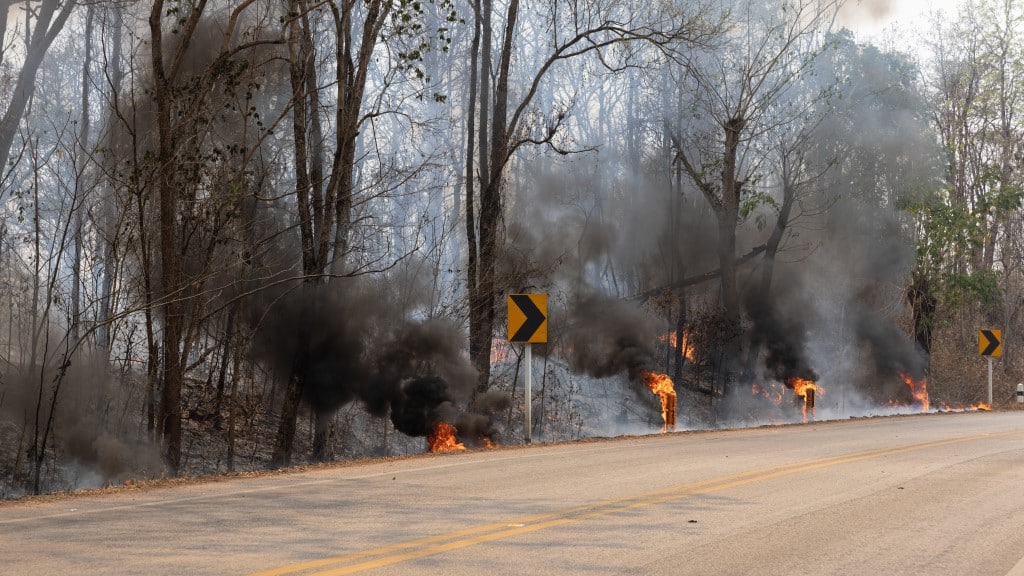Chiang Mai faces air pollution crisis due to traditional fire practices
- June 20, 2024
- 11:02 am


Iain Hoey
Share this content
Fire and its role in northern Thailand’s pollution crisis
During the haze season from February to April, Chiang Mai frequently tops the list of the world’s most polluted cities.
As reported by Huizhong Wu for AP News, fine particulate matter levels in the city during March and April are about 20 times the World Health Organization’s recommended limit.
Chiang Mai’s air quality issues are closely tied to local practices involving fire.
Fire is deeply ingrained in the region’s culture and agricultural methods.
Prime Minister Srettha Thavisin has highlighted Chiang Mai as a “model” for tackling air pollution, making multiple visits and pledging clean air legislation to ensure that access to clean air is a basic human right.
Traditional agricultural practices and burning in Chiang Mai
Northern Thailand’s air pollution is largely attributed to farmers who burn corn stubble to clear fields.
Although alternatives like biochar and tilling exist, they require significant labor and equipment, which are not feasible for many subsistence farmers in the hilly terrain.
Despite CP Foods implementing a tracing system to avoid buying corn produced on deforested or burned land and the Prime Minister’s plans to ban imports of corn grown on cleared land, the practice continues.
This is compounded by shifts in corn cultivation to neighbouring countries where stubble burning is still common.
Researchers from Chiang Mai University found that more than 51% of the haze comes from biomass burning, with about 23% originating from long-range pollution, likely from India.
Cultural significance and fire management policies
Fire holds significant cultural importance in northern Thailand, used for forest management, agricultural clearing, and even as a form of protest.
Olivier Evrard of the French National Research Institute for Sustainable Development noted that fire is often used in protests, such as the 2018 controversy over a judiciary complex built on protected forest land.
Thailand has implemented numerous policies to regulate burning, including a national zero-burning directive in 2013.
However, these measures have had limited success, as people responded by burning before and after the ban periods, prolonging the haze season.
Chiang Mai province now allows controlled burns through a permit system managed via the FireD app, which predicts pollution levels using weather and satellite data.
Despite estimates that half of the fires in the province go unregistered, researchers see the app as a positive step toward better fire management.
Challenges in implementing fire regulations
For many villagers in northern Thailand, navigating the bureaucracy for legal burns is difficult.
Tiengtrongsakun, the Pakanyo chief in Ban Mae Lan Kham, assists his community with the necessary paperwork since many do not speak Thai or understand the policies.
He said: “If we hand them the document or registration form, they don’t know what to do with it.
Often they just throw the papers away.”
Researchers argue that policymakers need to consider the socio-economic conditions and cultural practices of the villagers.
Many belong to tribal groups not formally recognised by the Thai government and face challenges in accessing education and jobs.
As long as burning remains the most efficient and cost-effective method for their livelihood, it will continue.
Mary Mostafanezhad from the University of Hawaii commented: “If burning is the easiest and most cost-efficient way to grow your crops, or to make a living, until that is not true, it’s going to continue to happen.”

